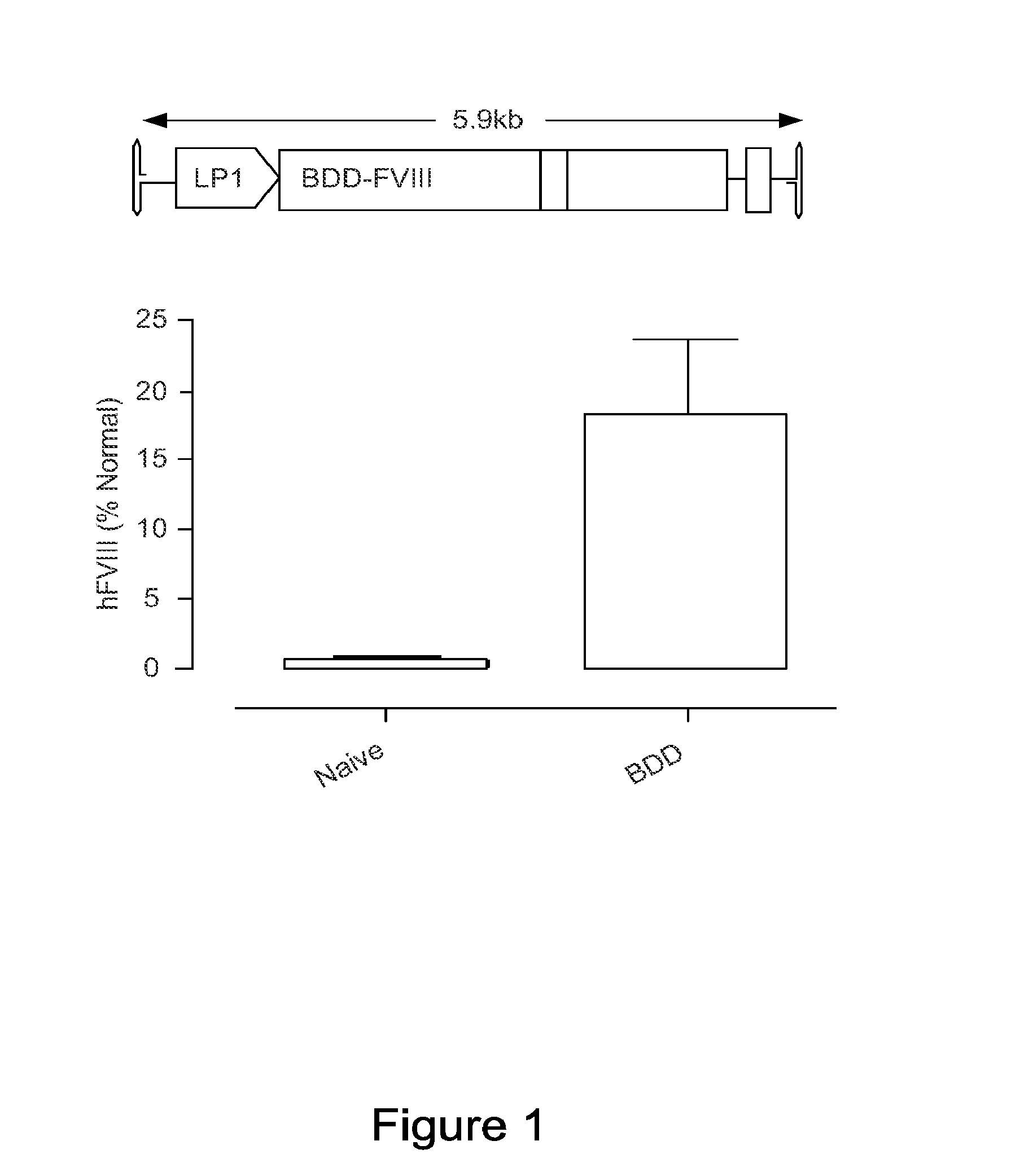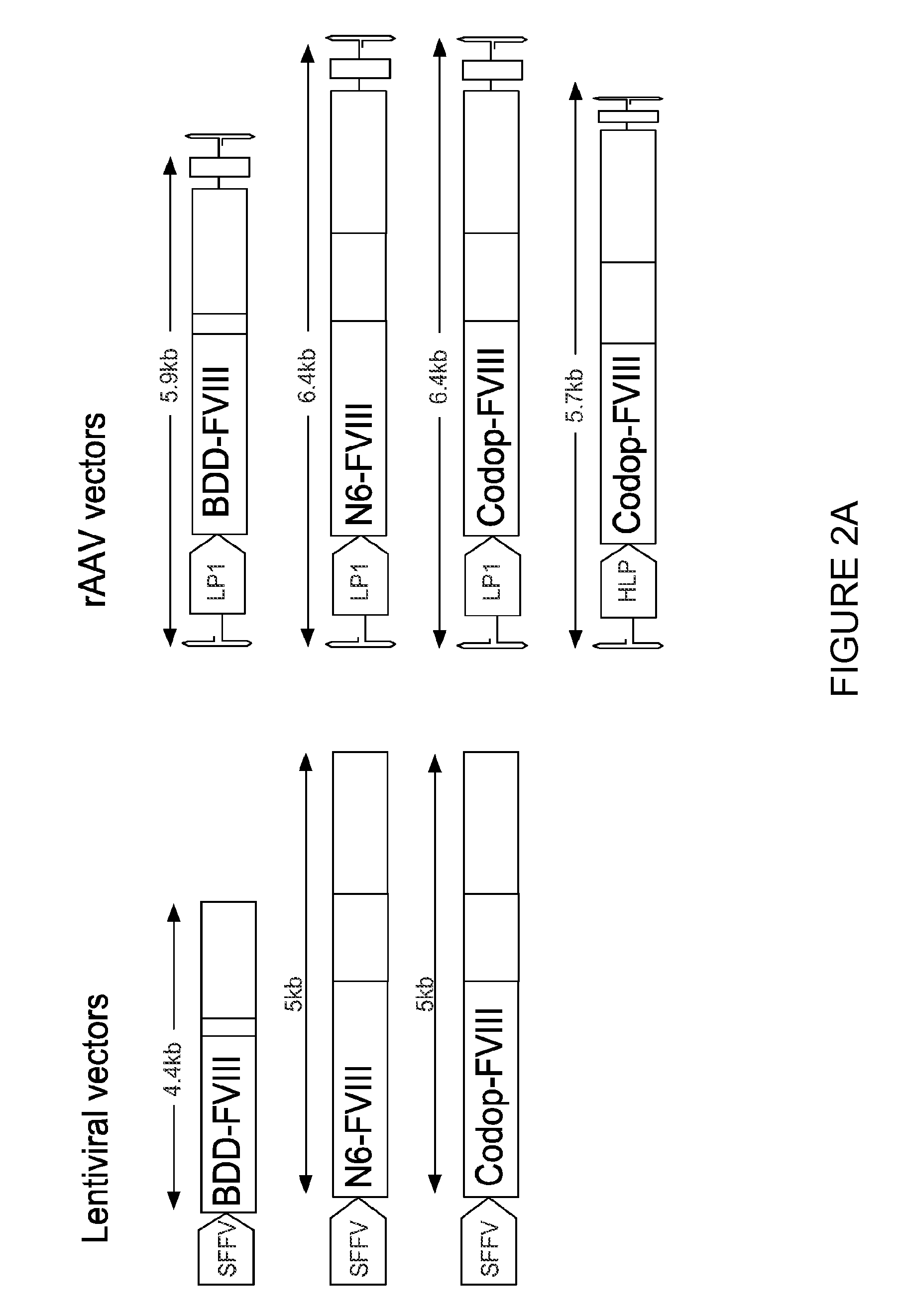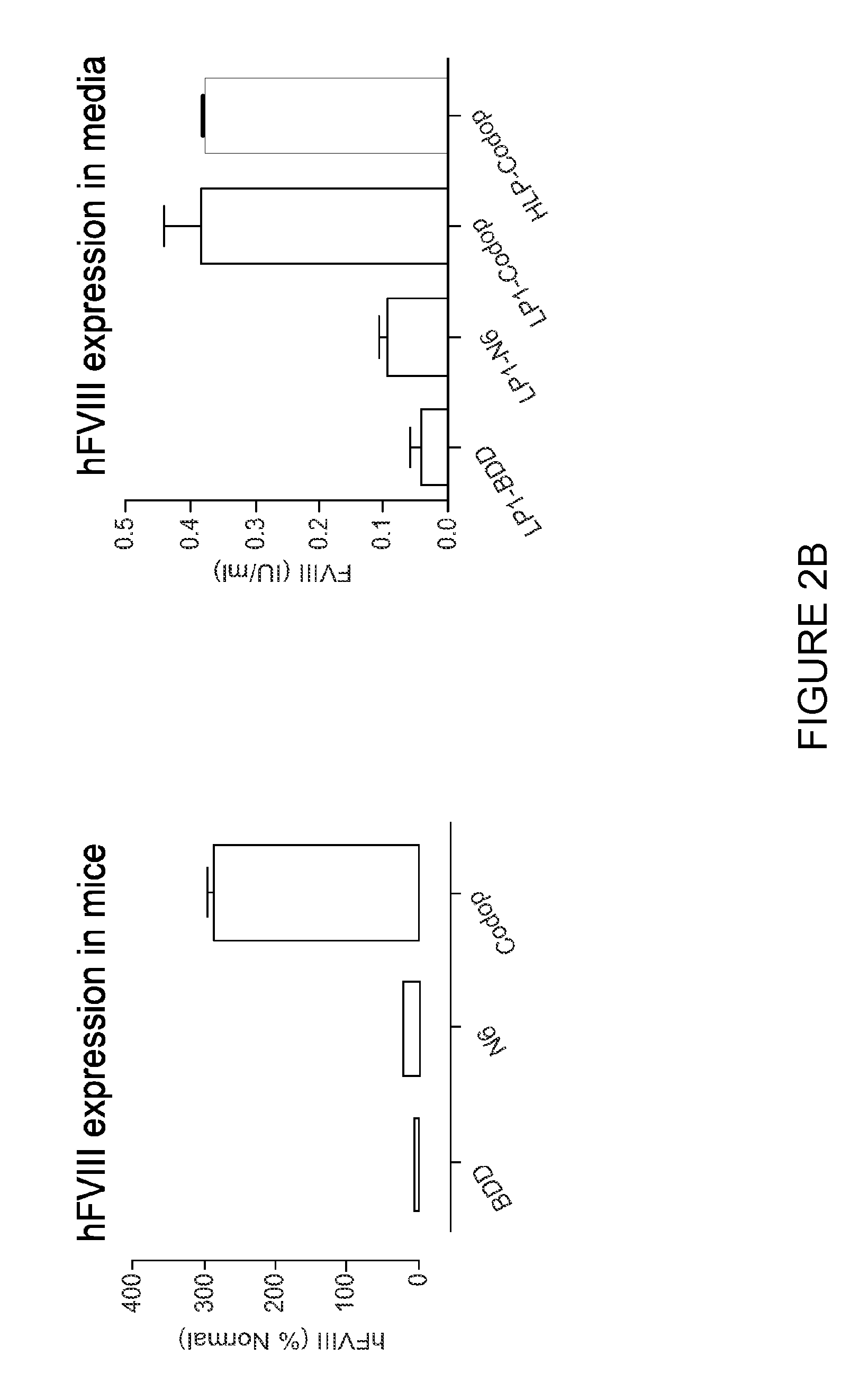Optimised coding sequence and promoter
a coding sequence and promoter technology, applied in the field of optimizing the coding sequence of human blood clotting factor eight, can solve the problems of large size of hfviii cdna, high inefficiency of hfviii protein expression, permanent disability and occasionally death
- Summary
- Abstract
- Description
- Claims
- Application Information
AI Technical Summary
Benefits of technology
Problems solved by technology
Method used
Image
Examples
example 1
Packaging of an hFVIII Expression Cassette into rAAV
[0193]The inventors have established that a 6.0 kb expression cassette containing the BDD-FVIII cDNA under the control of the previously described liver specific promoter (LP1) can be efficiently packaged into rAAV vectors pseudotyped with serotype 5 capsid proteins (rAAV5-LP1-BDD-hFVIII) using the conventional 3 plasmid transient transfection method. Tail vein administration of only 2×109 rAAV5-LP1-BDD-hFVIII particles into adult male FVIIIKO mice resulted in FVIII coagulation activity of 18±5.3% using a chromogenic assay (FIG. 1), which is significantly above the level required for amelioration of the bleeding diathesis in humans (>1% of normal).
Scale-Up of rAAV-hFVIII Vector Production
[0194]The inventors have established a GMP compatible, simple, scalable rAAV production method using the baculovirus expression vector and insect cells. A key advantage of the baculovirus system is the ease with which production can be scaled up. I...
example 2
Introduction
[0201]Hemophilia A is a serious bleeding disorder caused by a deficiency in, or complete absence of, the blood coagulation factor VIII (FVIII). It is the most common hereditary coagulation disorder with an incidence approaching around 1 in 5000 males1. The disorder is an attractive candidate for gene therapy because only a modest increase in FVIII plasma concentration is needed for therapeutic benefit, with levels of >1% able to achieve markedly reduced rates of spontaneous bleeding and long term arthropathy2. However, although preclinical results using gene therapy in animal models of hemophilia A have been encouraging, no approach as yet has been translated to clinical success where insufficient levels of FVIII expression have been observed3.
[0202]Low FVIII expression is principally caused by inefficient expression of the mRNA4-6, a significant proportion of protein misfolding with subsequent intracellular degradation, and inefficient transport of the primary translati...
PUM
| Property | Measurement | Unit |
|---|---|---|
| half life | aaaaa | aaaaa |
| time | aaaaa | aaaaa |
| time | aaaaa | aaaaa |
Abstract
Description
Claims
Application Information
 Login to View More
Login to View More - R&D
- Intellectual Property
- Life Sciences
- Materials
- Tech Scout
- Unparalleled Data Quality
- Higher Quality Content
- 60% Fewer Hallucinations
Browse by: Latest US Patents, China's latest patents, Technical Efficacy Thesaurus, Application Domain, Technology Topic, Popular Technical Reports.
© 2025 PatSnap. All rights reserved.Legal|Privacy policy|Modern Slavery Act Transparency Statement|Sitemap|About US| Contact US: help@patsnap.com



